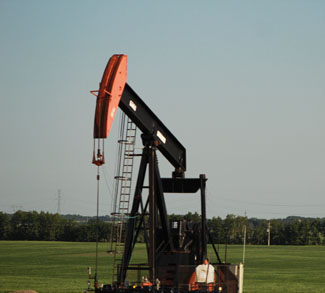A high oil price regime is most likely to persist over the medium term (i.e. the next few years) with sanctions getting even tighter on the supply of Russian oil, coal, and petroleum products. Equally impacted by the war is the production and supply of wheat, corn, barley, and edible oil from Ukraine. A long-term perspective on the war indicates that energy security and food insecurity will be heavily impacted by the prolongation of the Russo-Ukraine conflict and any spillover into other European territories. In the Indo-Pacific region, the outbreak of hostilities is imminent due to the rise of tensions between China and the US and its allies over Iran, Taiwan, and the disputed islands of the South China Sea. The presence of more than a million forcibly displaced nationals of Myanmar in refugee camps along the coastal areas of Bangladesh heightens tensions in the region, raising the possibilities of cross-border incursions and insurgency. An outbreak of hostilities between the littorals of the Bay of Bengal leaves open the possibility of drawing in external naval forces in a regional conflagration.
The majority of low- and middle-income economies dependent on the import of fossil fuel and food are equally apprehensive about the adverse impacts of climate change, migration from man-made and natural disasters, and recurrence of the pandemic.
Import dependent economies are faced with an impending crisis from the economic and financial downturn due to the high price of energy, raw materials, and essential commodities. Many predict high oil prices to persist over the longer-term horizon due to the complexities of the Ukraine war. A diplomatic solution to end the conflict appears to be elusive and far-fetched in the absence of any scope for reconciliation. A most likely scenario suggests protracted warfare against the Russian occupation, disrupting the supply of Ukrainian grains and Russian oil. In the nearer term, looming on the horizon are the threat of an Israeli attack on Iranian nuclear facilities and the Russo-Ukraine war spreading into neighboring Poland, Lithuania, and/or Moldova.
Analysts attribute the high price regime to a diverse set of factors. Low oil prices prevailed during early and middle of 2020, resulting from depressed demand and lower production levels during the pandemic. In April of 2020, oil prices plummeted to $16.34 per barrel as demand for energy dropped due to the disruption in economic and industrial activity in many of the European and Asian economies hard-hit by the pandemic. Low production of oil during the pandemic caused a supply shortage leading to a spike in the price of the commodity. A surge in demand occurred in May of 2020 through to August, with oil prices wavering a little bit lower or above the $40–47 range. In October the prices fell back to $40 and began to rise steadily, peaking at $68 per barrel in February of 2021. Oil prices remained high and climbed to $88.33 a barrel in October of 2021. Demand for energy began to rise in the latter part of 2021 as many countries lifted restrictions on travel and ended lockdowns as the pandemic waned and an economic recovery gathered momentum. Oil prices slumped back to $69 a barrel by the end of November 2021, and began to rise sharply upwards to a peak of $117 per barrel around the middle of June 2022. Prices reached their most recent peak of $122 on June 10, owing to geopolitical tensions from the Ukraine war and the resulting wide disparity in supply and demand.
Analysts from the Economy Forecast Agency (EFA) predict the price for the second half of the year at an average of $114 dollar per barrel. The average oil price for 2023 is expected to rise to $146 per barrel, ranging from a low of $124 dollars in February to a peak of $183.4 dollars per barrel in December. The forecast for the first half of 2024 is even higher at an average of $185.94 dollars a barrel, reaching $200 dollars in the second half of the year. In 2024, the lowest oil price is expected to prevail around $181.73 dollars a barrel in April, rising to a peak of $219.73 dollars per barrel in August. In 2025, the average price forecasted is at $193.31 per barrel, and in 2026 the expected average comes in at $191.43.
Under the high risk, low reward scenario climate change and geopolitical risks are equally dangerous to domestic and regional stability. The likelihood of inundation of coastal areas is highly probable, which risks creating a large number of internally displaced persons (IDP). Rehabilitation and relocation of the IDPs (climate refugees) poses an extra burden on governments having a hard time coping with higher prices of energy, raw materials, and essential commodities. Food security in particular is a critical issue for nations endowed with a large population. Agricultural inputs such as fertilizer and diesel are in short supply, and a downtrend is expected to prevail throughout the remainder of this year and most of 2023. Shortage in the supply of agricultural inputs will reduce overall agricultural output and subsequently inflate the demand for imported food grains and edibles.
Food security is worsening day by day with the war in Ukraine putting the populations of the low- and middle-income nations at risk. United Nations agencies such as the World Food Programme (WFP) have sounded the alarm about food supply shortages, warning governments of an imminent famine in those developing economies that are overly dependent on imported grains and edibles. Ukraine and Russia supply nearly 30 percent of the world’s wheat. Egypt, Turkey, Georgia, Armenia, Azerbaijan, Albania, Mongolia, Nicaragua, Benin, and the Congo (Brazzaville) are the major destinations for wheat from Ukraine and Russia. Major wheat producers in the world include the USA, India, Russia, Ukraine, China, Australia, Argentina, Canada, Turkey, and Pakistan. Top producers have curtailed the supply of wheat to international markets: India imposed a ban on the export of the grain to ensure food security in the wake of high prices caused by the Russo-Ukraine war; China, the largest producer of wheat accounting for 17.5 percent of the global production, retains its entire production for domestic consumption; Russian wheat has been curtailed due to US and EU sanctions; and wheat from Ukraine is stranded due to the blockade of the Black Sea by the Russian flotilla. Taken together, nearly 37 percent of the total global production of wheat produced in China, Russia, India and Ukraine is being kept off global markets.
United Nations and Turkey is engaged in the process of finding a solution to the export of wheat from Ukraine. The establishment of a safe corridor for extraction of the grains from Odessa by the Western alliance with the assistance from affiliates and partners – such as, Turkey and the littorals of the Black Sea – shed some optimism on food security in the midst of overwhelming odds. Safe corridor for the benefit of ‘food security’ is urgently required to guarantee the supply of food for the hungry populations of the world. Politically, the West is in line to garner support from the Global South in its rivalry with the anti-status quo powers (Iran, Russia, China, etc.).
The Economist Intelligence Unit (EIU), in its Global Outlook on Food Insecurity, estimates that the price of wheat will rise by 40 percent. An estimated 570 million people living in the Middle East, Asia, and Africa are vulnerable from the scarcity of the grain. According to the United Nations — Egypt, Turkey, and Bangladesh dependent upon the supply of wheat from Russia and Ukraine for up to 60 percent of their needs, and each may have to go through some belt-tightening until the conflict ends. Crisis-ridden countries such as Yemen, Syria, Ethiopia, and Afghanistan, all of which are dependent upon food aid, remain highly vulnerable to a severe humanitarian crisis.
Russia is the biggest supplier of chemical fertilizers worldwide. Constrained supply of chemical fertilizers is expected to impact upon agricultural productivity in the short term (2022–23/24). Ecuador and Uruguay in Latin America; Mexico in North America; Mongolia, Azerbaijan, and Kazakhstan in Central Asia; Finland, Moldova, Serbia, Estonia, Latvia, Albania, and Belarus in Europe; Togo, Benin, Nigeria, Niger, Burkina Faso, South Africa, and Senegal in Africa – all of these countries depend on the supply of fertilizers from Russia and Ukraine for more than 50 percent of their needs. USA, United Kingdom, Ireland, Germany, France in the Europe; Brazil, Peru, Paraguay in South America; Namibia, Zimbabwe, Democratic Republic of Congo (DRC) in Africa depend on the Russian and Ukrainian fertilizers for up to 25–50 percent of their needs.
Countervailing arguments in favor of shortening the duration of the Russo-Ukraine war rely on a negotiated settlement to the crisis. However, most observers are skeptical of any such possibilities due to the inflexible stand of Russian and Ukrainian leaders regarding any kind of compromise. The economic blowback facing European nations from sanctions on Russian oil and restrictions in Russian gas supply can be a persuasive argument for concluding the war. President Putin will not yield to the pressure on the Russian economy due to sanctions imposed by the US, EU, and alliance partners. Success of the Ukrainians in the battlefield may over time be able to put enough pressure on Moscow to come to the table — however, chances remain slim.
The views expressed in this article belong to the authors alone and do not necessarily reflect those of Geopoliticalmonitor.com




